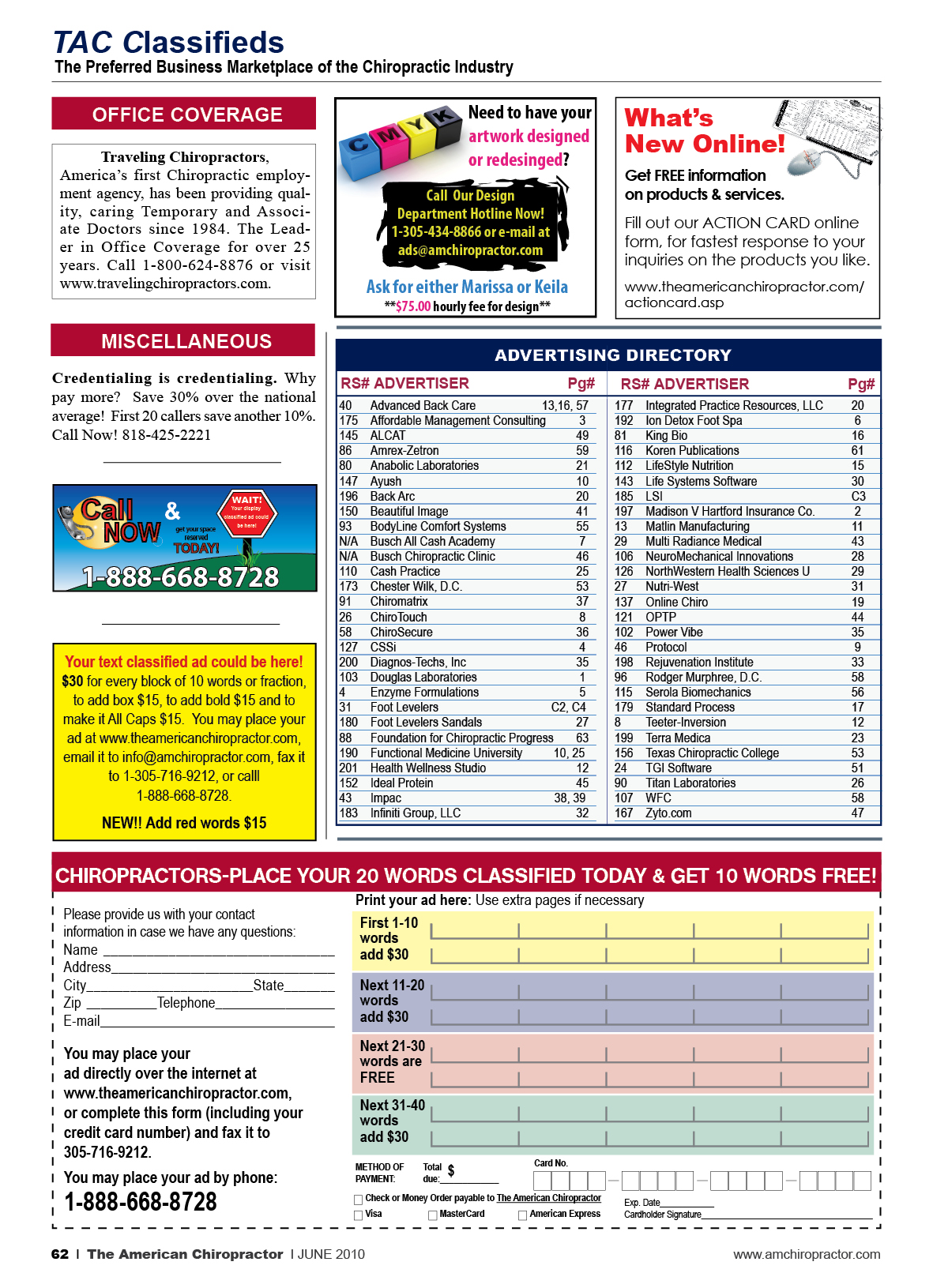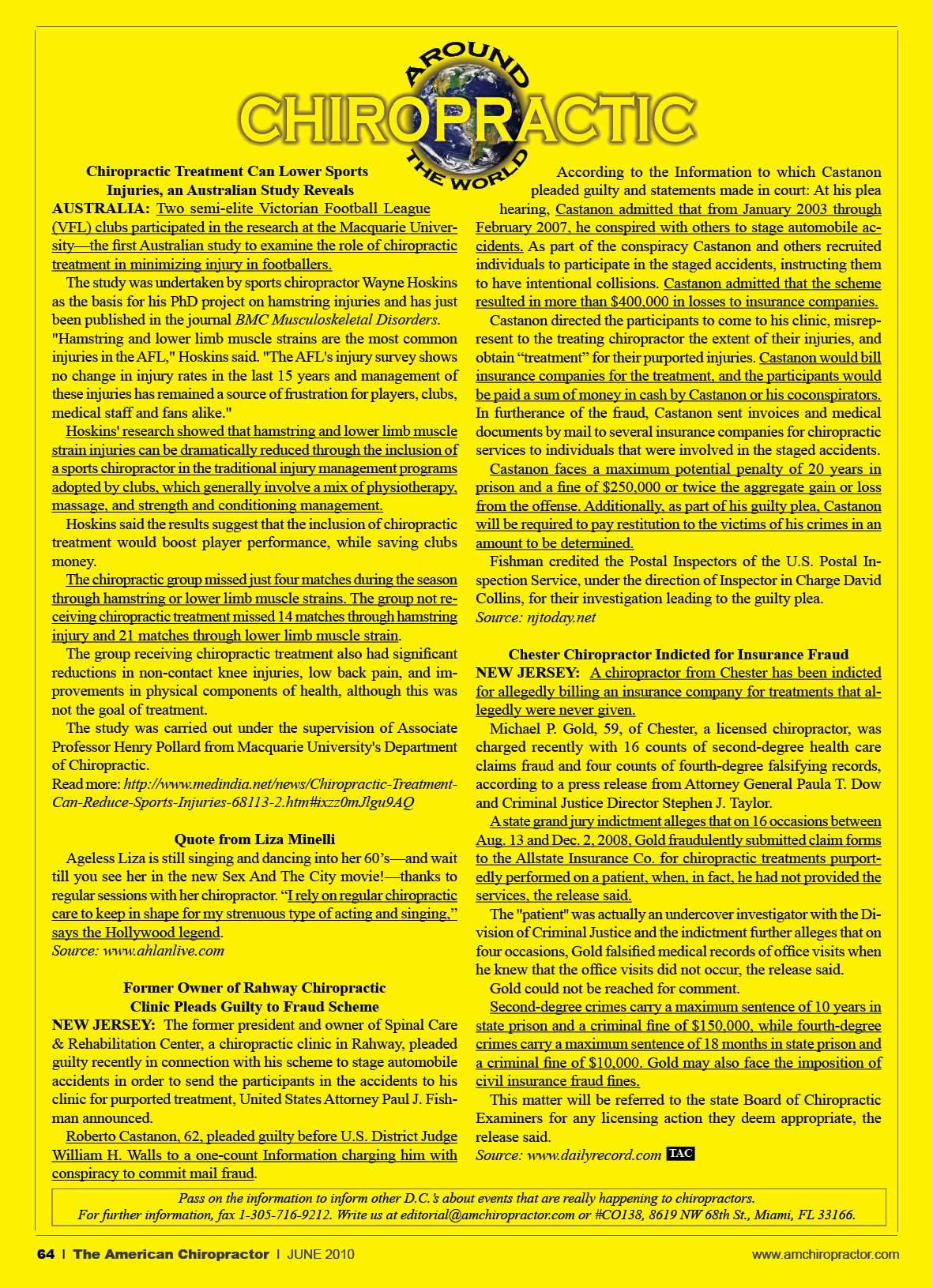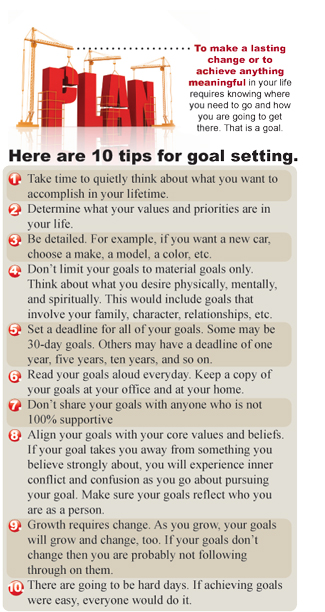As a chiropractor who lost 120 pounds and now teaches others how to lose weight, I bring first-hand experience to the challenges involved with weight loss. I want my patients to lose weight healthfully, intelligently and permanently, without resorting to drugs or surgery.
If it were as easy as “putting your fork down,” we wouldn’t have as high an obesity rate as we have in our country. Nor is there a “quick and easy fix,” as those who tout the latest fad diets want us to believe.
Just as there is an increased sensitivity in our society to viewing addiction to alcohol as genetically linked, with time our understanding of a genetic predisposition to be overweight will be more clearly understood. A genetic predisposition to be fat, however, can be overcome with an eating and exercise plan that is flexible, practical and tailored to a patient’s unique circumstances.
When I teach and coach overweight patients, I first find out how much weight they want to lose, and assess whether their goals are reasonable, attainable and healthful. I recommend a patient have an ideal goal weight that they want to reach, and a weight-range that they want to live within. I also have them decide on a weight that they “never want to see on the scale again,” with an agreement that if they do, they will strictly return to the plan that we designed to lose their excess weight.
Next, I talk about a patient’s motivations for losing weight. Our reasons for them to lose weight–being healthier and taking pressure off the spine–often are not a patient’s motivation. The most powerful motivators are emotional rather than logical, and may not “make sense” to others. Often they are very personal, and your patient may or may not want to reveal them to you. I have patients write their motivators down, and encourage them to be honest about their deepest feelings. Losing weight requires dedication and commitment, and if a patient is driven and supported by emotionally powerful motivators, they have a strong foundation for success.
 Research has shown that keeping track of when a person eats, what they eat and how many calories are in the foods they eat gives people the best chance to lose weight. Most patients have heard of calories, but most don’t know how many calories they need to consume to lose the weight they want to lose. Nor do they know how many calories are in the foods that they eat.
Research has shown that keeping track of when a person eats, what they eat and how many calories are in the foods they eat gives people the best chance to lose weight. Most patients have heard of calories, but most don’t know how many calories they need to consume to lose the weight they want to lose. Nor do they know how many calories are in the foods that they eat.
To lose one pound, a person needs to consume 3,500 calories less than they need to maintain their weight. Thus, if a person wants to lose one pound in one week, they would need to consume 500 calories a day less than they need to maintain their weight. How much a person needs to maintain their weight is affected by their genetics, age, metabolism, exercise level and muscle-to-fat ratio. Thus, it is not an exact science. As a good starting point to determine how many calories a person would need to maintain their current weight, I multiply a patient’s weight by 10 if they aren’t going to exercise, and by 12 if they are willing to walk an hour or more per day.
I then give my patients nutritional guidelines that will support their health and their weight loss. By understanding the glycemic index of foods, patients can understand how some foods will stabilize blood sugar and support feeling satiated for longer periods of time. This allows them to eat in a way that reduces their physiological desire to eat, thus reducing cravings. Especially because our patients will be eating less, it is that much more important that they get their calories from healthy food sources. There are thin people who are unhealthy, and we don’t want our overweight patients to join their ranks. All that said, I have my patients decide for themselves what they will be eating. This supports more long-lasting success. I also encourage patients to eat six or more times per day, as a way of avoiding feeling overly hungry, and avoiding the body’s tendency to slow its metabolism when too long a period of time elapses without eating.
Following these guidelines, a patient is better able to distinguish eating for physiological reasons versus eating for psychological reasons. This is where the concept of addiction plays in. Many of my patients and I benefit from understanding how deep our connection to overeating is, and how we often use food as an addictive substance. My definition of addiction is “whenever I use a substance on a regular basis to ignore or cover up issues, emotions, or thoughts, I am an addict.” Recognizing how I use food as an addictive substance has given me an awareness that better allows me to understand the emotional, mental, physical and spiritual challenges that I faced as I lost weight, and the challenges I face as I maintain my weight loss.
As chiropractors, we are uniquely qualified to teach a patient about the benefits of exercise, tailor a plan to their size and abilities, and keep their spine as healthy as possible to support their exercise plan. I encourage my patients to choose an exercise that allows them to do it consistently, safely, with relative ease and adaptability, and an exercise that they can do for the long term. For most patients, walking fits all these criteria.
I then offer my patients support (or encourage them to benefit from other healthcare professionals, if needed) to deal with the emotional and mental challenges that often need to be addressed for lasting results. I address other issues rarely dealt with in a weight-loss plan, such as how to use the scale to support you, how to deal with your clothes as you grow out of them, and importantly, how to deal with the inevitable challenges and setbacks one is bound to face. I accept setbacks as an inevitable part of the weight loss process and teach patients how to make those setbacks as short-term as possible.
I believe it is important to examine and sometimes change how people talk to themselves (their “self-talk”). I also encourage patients to find role models, and build a support system of people they can reach out to when necessary. A support system can include family members and friends, others trying to lose weight, and/or a weight loss coach. When family and friends are supportive, it can make a powerful difference in a patient’s success.
We can play an important part in a patient’s weight-loss success by combining knowledge, sensitivity and respect for the challenges that our overweight patients face, and by encouraging a drug-and-surgery-free approach to losing weight healthfully and permanently.
Andrew Sokolsky, D.C., is the creator of ‘The Sokolsky Plan, An Intelligent Guide to Permanent Weight Loss’, an in-home seminar for patients. He is also the director of the San Francisco Weight Loss Center, and has been in private practice since 1987. He can be reached at
TheSokolskyPlan.com and by phone at 1-415-333-4800.
 Medical professionals continue to battle insurance bureaucracy and speculate on an unpredictable health care future. Cash-based aesthetic treatments supplement practice revenue. Cosmetic treatments are no longer limited to the traditional plastic surgeon and dermatologist. From dentists to family practitioners, they are adding cosmetic treatments as the baby boomer market continues to expand.
Medical professionals continue to battle insurance bureaucracy and speculate on an unpredictable health care future. Cash-based aesthetic treatments supplement practice revenue. Cosmetic treatments are no longer limited to the traditional plastic surgeon and dermatologist. From dentists to family practitioners, they are adding cosmetic treatments as the baby boomer market continues to expand. 


 I
I








 To make a lasting change or to achieve anything meaningful in your life requires knowing where you need to go and how you are going to get there. That is a goal. Every day, we choose whether the actions of that day are going to bring us closer to who we want to be and where we want to go, or further away.
To make a lasting change or to achieve anything meaningful in your life requires knowing where you need to go and how you are going to get there. That is a goal. Every day, we choose whether the actions of that day are going to bring us closer to who we want to be and where we want to go, or further away.
 Research has shown that keeping track of when a person eats, what they eat and how many calories are in the foods they eat gives people the best chance to lose weight. Most patients have heard of calories, but most don’t know how many calories they need to consume to lose the weight they want to lose. Nor do they know how many calories are in the foods that they eat.
Research has shown that keeping track of when a person eats, what they eat and how many calories are in the foods they eat gives people the best chance to lose weight. Most patients have heard of calories, but most don’t know how many calories they need to consume to lose the weight they want to lose. Nor do they know how many calories are in the foods that they eat.